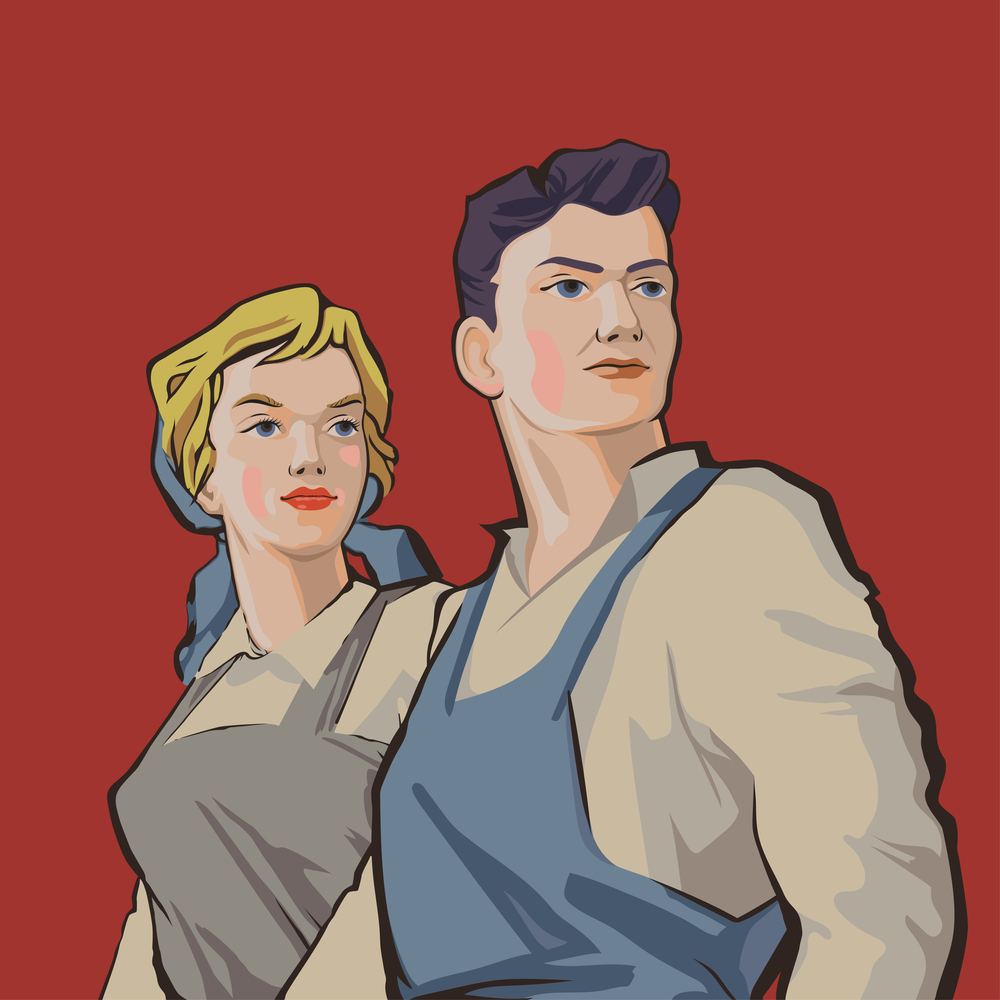In my previous two posts, I offered recommendations for reading on the Russian Revolution and the Soviet economy. Today, I’d like to turn our attention everyday life in the Soviet Union.
My most cherished comment on one of my books dealing with the Soviet system was from then Department Chair of Economics at Moscow State University, who upon reading my discussion of the contrast between how the system was supposed to work and how it really worked wrote to me to tell me that my description fit perfectly with the daily life that he and his family had to endure. I had done my job then. I think the purpose of economic theory is to aid us in our task of making sense of the political economy of everyday life. Not theorems and graphs on blackboards and textbooks, but the lived reality out the window in the social settings we find ourselves exploring as social scientists and scholars.
Perhaps the best window into everyday life is through ethnographies, either loose ones such as those written by journalists, or rigorous ones written by social scientists. Since this was always my intent, rather than merely writing down the history of the political leaders, I was from the beginning drawn to first-person accounts and the impact of the Soviet experience on the lives of ordinary citizens. Obviously, given the weight I place on ideology and policy initiatives, I think you also have to pay attention to the official view and the official documents. But truth lies in the interaction between the official policy and the impact felt in the day-to-day life of people experiencing those policies.
The first work I would suggest then is Emma Goldman’s My Disillusionment in Russia (originally published in 1923) based on her time in Russia in 1920 and 1921.

Emma Goldman was a Russian anarchist who had emigrated with her family to the United States in 1885. She was arrested multiple times in the US for political activism and for distributing pamphlets advocating for social change. She was deported from the US under the Anarchist Exclusion Act, and she went to Finland and then eventually to Russia. A revolutionary, Goldman was originally prone to view the Russian Revolution as a positive signal of world-wide revolution, but once inside the system her disillusionment began. She witnessed first-hand an economic system that could not work, and the origins of political terror which were unspeakable to her. One of my favorite scenes in her book is the description of a May Day parade which was supposed to exhibit great enthusiasm for the revolution but instead only revealed the thinly veiled pain and suffering of the people in the streets with forced shows of support for the regime. Read this book and then watch the movie Reds, with a new appreciation for the scene where Emma Goldman confronts John Reed with the reality of the situation in 1921.
Shelia Fitzpatrick’s Everyday Stalinism (originally published in 1999) is a wonderful social history exploring the systems of survival that ordinary individuals developed to cope with the scarcity and repression of the Stalin regime. The informal norms and networks that make life possible in such harsh conditions are unearthed in Fitzpatrick’s account.

Warren Nutter’s The Strange World of Ivan Ivanov (originally published in 1969) is an examination in comparative terms of the economic life of an ordinary individual and their family in the Soviet system as compared to the US. It is an eye opening comparison, and one that anyone hoping to understand the impact of communism on the lives of those who have the misfortune of having to live under that system. Any romantic notion of a move from a “kingdom of necessity” to a “kingdom of freedom” will be disabused quickly by any cursory reading of Goldman, Fitzpatrick, and Nutter.
There are two journalistic accounts from the Brezhnev years and from the Gorbachev years that I would suggest are foundational to get a window into the daily life of a Soviet citizen. The first would be Hedrick Smith’s The Russians (originally published in 1975), which explained the underground market, the queuing system, and the samizdat culture (including jazz music). The second is David Remnick’s Lenin’s Tomb (originally published in 1993), which details everyday life during the last days of the Soviet empire. Both of these books give a fantastic bottom-up account of the day-to-day life of ordinary individuals struggling to survive and cope with the difficult conditions and changing circumstances as the Soviet system economically, politically and socially corrosively eats itself from within.
Peter J. Boettke is University Professor of Economics & Philosophy, George Mason University, Fairfax, VA 22030.


Comments are closed.